LightScalpel legacy
LightScalpel finds its roots in the revolutionary flexible CO2 laser fiber and all-metal CO2 laser tube technologies since it was introduced to dentists by Luxar Corporation in 1991 as the first ever soft tissue surgical CO2 laser, designed specifically for a small office environment. Over 12,000 dentists, physicians, and surgeons worldwide enjoy the many praised clinical benefits and ease of use of the flexible fiber CO2 laser.
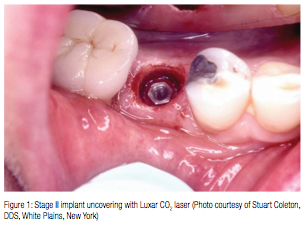
In 2002, following the sale of Luxar to a large multinational corporation, its former principals, Paul Diaz, MSc, EE, and Dr. Peter Vitruk, PhD, started LuxarCare LLC, whose mission was to provide total support for Luxar laser owners with affordable accessories and reliable repairs. Started in Dr. Vitruk’s garage in Seattle, Washington, and working with nothing more than extensive laser technology knowledge, LuxarCare has grown to become an exclusive accessory and repair provider for all Luxar lasers in North America. Many dentists in the United States are still using lasers that they purchased in 1991-1993. No other laser company in the world has a longer history and more consistent track record of keeping surgical lasers in business since the early 1990s. In the mid-2000s, the LuxarCare owners set their eyes on creating the next “Best in Class” dental and surgical laser. Soon, the LightScalpel brand was born.
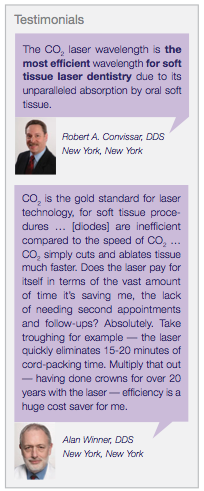
LightScalpel’s mission and vision
LightScalpel’s founders defined and charted the course to provide a superior customer experience focusing on:
- Latest in laser-tissue interaction science
- U.S.-based laser technology, manufacturing, and customer service excellence
- Dedication to laser training and education
LightScalpel team
Gathering together many talented and experienced former Luxar Design and Manufacturing Engineers, LightScalpel founders, Drs. Vitruk and Diaz, took on the challenge of designing and building the next generation of dental CO2 surgical lasers. LightScalpel scientists, engineers and technicians share 300-plus years of combined experience of leadership in laser dentistry, surgery, and medicine. Launched in 2013, LightScalpel lasers feature re-engineered flexible fibers and handpieces, as well as further enhanced reliability and longevity of its rugged all-metal laser tube technology. At the same time, LightScalpel continues to focus on LuxarCare’s founding principles of exceptional customer service and technical support.
Wavelength matters: soft tissue ablation and coagulation
The highest order priority of the LightScalpel mission was a review of laser-tissue interaction science. Presented in Figure 3 is the modern-day understanding1 of how different laser wavelengths interact with the main chromophores (absorption centers) in the oral soft tissue for the three wavelength groups of practical dental lasers:
 circa 1,000 nm (diodes and Nd:YAG laser)
circa 1,000 nm (diodes and Nd:YAG laser)- circa 3,000 nm (Erbiumlasers)
- circa 10,000 nm (CO2 lasers)
As illustrated in Figure 3, wavelengths circa 10,000 nm are 1,000-plus times superior to 800-1,100 nm wavelengths for soft tissue ablation. At the same time, the wavelengths circa 10,000 nm are 10-plus times superior to wavelengths circa 3,000 nm for soft tissue coagulation. Naturally, LightScalpel’s choice was the CO2 laser as the only wavelength that delivers excellent ablation with simultaneous coagulation (unobtainable with either diodes or Erbium wavelengths).

Wavelength matters: implants
The future of dentistry is unthinkable without implants. Naturally, the next step in evaluating the appropriate laser wavelength for the needs of modern-day and future dentists was the study of laser-implant interaction properties. Presented in Figure 4 is the absorption spectrum of titanium,2 the most common implant material. Once again, LightScalpel’s choice for the CO2 laser wavelength is based on solid scientific foundation and assures that implants are affected (heated) approximately 4 times less than at diode and Nd:YAG wavelengths (circa 1,000 nm) and approximately 3 times less than at Erbium laser wavelengths (circa 3,000 nm).
LightScalpel fiber and 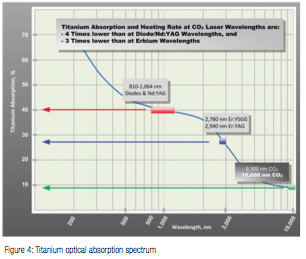 handpieces
handpieces
The 1.75 meter extended reach of the LightScalpel fiber allows for convenient positioning of the laser in relation to both patient and dentist, making it ideal for a dental office. The LightScalpel flexible fiber and handpieces (Figure 5) provide the clinician with the most natural “scalpel-like” feel. The fiber is durable, light, maneuverable, and offers high precision for unparalleled focus ability of the laser beam.

LightScalpel top performance and lowest cost maintenance: all-metal laser tube
The LightScalpel proprietary all-metal CO2 laser tube (Figure 6) lasts for up to 45,000 hours (7-plus years), is inexpensively rechargeable, capable of handling extreme shocks and vibrations, and is easily pulsed and air-cooled under the heaviest operating conditions.
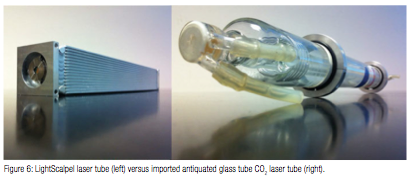 LightScalpel-assisted soft tissue oral surgery
LightScalpel-assisted soft tissue oral surgery
The LightScalpel installed base in dentistry is rapidly growing, thanks to LightScalpel’s price point being more than $20,000 below competitive offerings (from overseas), and thanks to the unprecedented versatility of its handpieces and controls. Figures 7 and 8 illustrate some of the LightScalpel’s applications that allow it to boost profitability (as reported by dental practices using LightScalpel) because of performing soft tissue procedures much quicker and virtually bloodless. Without LightScalpel, many soft tissue procedures would be referred out (and revenues lost), or much longer time would be spent (and vital efficiencies and profits lost because of the bleeding and suturing) on such procedures performed with a blade.
References
1. Jacques SL. Optical properties of biological tissues: a review. Phys Med Biol. 2013;58(11):R37-61.
2. Derived from Wolfe WL, Zissis GJ. The Infrared Handbook. Office of Naval Research, NAVY, Wash. DC, 1985;7-81.
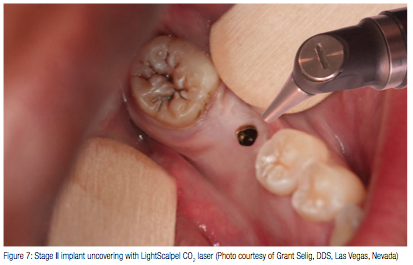
This information was provided by LightScalpel.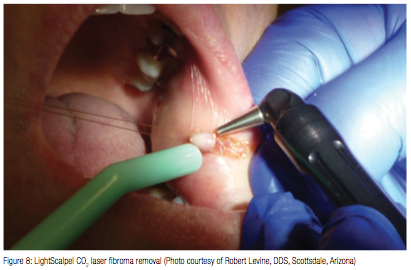
Stay Relevant With Implant Practice US
Join our email list for CE courses and webinars, articles and mores


